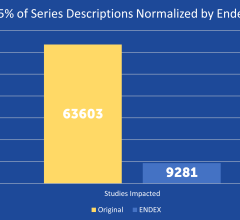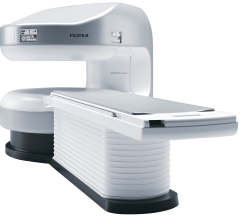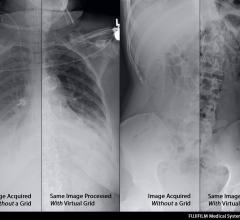The U.S. ultrasound market reached an all-time high of $1.44 billion in 2013 — a growth of almost 3 percent over 2012, according to Klein Biomedical Consultants’ “The Medical Diagnostic Ultrasound Market in the USA: Challenges & Opportunities in the New Millennium” 2013 report. Areas that contributed to market growth included musculoskeletal ultrasound and point-of-care ultrasound, which saw double-digit growth in 2013. “In spite of the uncertainties caused by the Affordable Care Act, continued declines in reimbursement and slow economic growth, we saw an uptick in ultrasound purchases,” said Harvey Klein, Ph.D., market analyst and author of the report.
For the most part radiography has been used to help patients. When it comes to football, however, the goal is less to help the athlete and more to get him on the field.
In an era of increasingly personalized medicine, patients are expecting more tailored approaches to care from their physicians. Mammography, long the gold standard for routine breast cancer screening, is no longer enough for a majority of women who find themselves at higher risk for breast cancer due to breast density. The issue of density, which limits the benefits of mammography, has been making its way to the forefront of breast cancer discussion in recent years, and advocates are pressing many in the healthcare community to reconsider their routine annual screening programs in order to save more lives.
Fujifilm’s APERTO Lucent is a 0.4T mid-field, open MRI system addressing today’s capability and image quality needs ...
Let’s face it, vendor neutral archive (VNA) is a hot topic these days and one you cannot avoid. Unfortunately, and much like the overly used and tiring buzzword “cloud,” the term VNA becomes a nebulous descriptor when comparing multi-vendor platform offerings. Although a gut feeling instinct to drive or kill this new initiative is immediately felt (visceral experience), driving an “apples-to-apples” RFP process can become a daunting task of fine print and between-the-lines exercises. Others may defer to their existing vendor for the solutions that may leave them without the feature, functions or future capabilities they will need.
In the healthcare organization of today, picture archive and communication systems (PACS) are a mainstay. Introduced to the healthcare world in the early 1990s, these systems have given providers a solution for storing, viewing and sharing patients’ medical images. In recent years electronic medical records (EMRs) and other health information systems have also gained popularity for storing and transmitting patients’ healthcare information. These systems, for the most part, have been specific to each hospital, practice and even department. As healthcare becomes more interactive and connected, with a focus on efficiency, healthcare organizations around the country are investing in ways to make these systems interoperable within the facility and across the enterprise.

SPONSORED CONTENT — Fujifilm’s latest CT technology brings exceptional image quality to a compact and user- and patient ...
Despite significant advances in imaging and therapy, cancer continues to be a leading health concern worldwide. One type of therapy that has been available for decades and is seeing a recent resurgence as a result of emerging technologies is targeted radionuclide therapy (TRT). In its basic form, TRT involves certain types of radioisotopes bound to a specific carrier molecule that allows the radiopharmaceutical (radioisotope plus carrier molecule) to selectively attach to certain cells. Only certain radioisotopes are favored for TRT because they give off the right type of radiation (either alpha or beta radiation) that kills cancer cells and shrinks tumors by damaging the cells’ DNA.
SPONSORED CONTENT — Fujifilm’s latest CT technology brings exceptional image quality to a compact and user- and patient ...
Over the last decade, the field of medical imaging has evolved from analog technology toward the digital age. This shift in medical imaging has seen the emergence of flat panel detector (FPD) technology in everything from cardiology systems to portable X-ray equipment. Digital solutions have already begun to revolutionize medical imaging by offering improved image quality, faster processing time and dose reduction advantages over their analog predecessors. Those who have already adopted digital imaging are part of a market that continues to grow, expected to reach a sum of more than $35 billion by 2019.
In terms of duration of treatment and cost, patients with early stage breast cancer may benefit from accelerated partial breast irradiation (APBI) with proton therapy versus whole breast irradiation (WBI), according to new research from The University of Texas MD Anderson Proton Therapy Center.
The Gammex “micro” diode laser family offers an economical alternative to conventional laser systems used for alignment purposes. Gammex “micro” has dimensions that are considerably smaller than other fixed lasers.
SPONSORED CONTENT — EnsightTM 2.0 is the newest version of Enlitic’s data standardization software framework. Ensight is ...
Physicians at Northwestern Memorial Hospital in Chicago were as stunned in 1979 by Godfrey Hounsfield’s exclamation as Hounsfield was at the computed tomography (CT) image. “My word, what is that?” asked the inventor of computed tomography, who later that year would receive the Nobel Peace Prize for his invention.
For Houston Healthcare in Warner Robins, Ga., patient safety has always been a priority. Clinicians can now image patients with the lowest possible dose without compromising diagnostic accuracy, and the facility has seen a 65 percent radiation dose reduction in routine abdomen/pelvis exams, a 59 percent dose reduction for routine chest exams and a 7 percent reduction in routine head procedures.
Patients are noticing the difference since Rye Radiology implemented 3D mammography more than two years ago, in 2012. Some are amazed they no longer need extra views. Some are grateful their 3D exam found that suspicious lesion when it was small and easier to manage. At least one patient credits the 3D exam with saving her life.
Did you know that approximately one-third of all the data in world is created by the healthcare industry and that ...
This year marks the 100th anniversary of the Radiological Society of North America (RSNA), and is being celebrated through the theme “A Century of Transforming Medicine.” Numerous activities are planned to celebrate its century mark Nov. 30 through Dec. 5 at McCormick Place in Chicago, including a Centennial Showcase. Imaging Technology News (ITN) congratulates RSNA on this monumental success, and for all it has done for this industry and its community over the years. You can preview some of new technology and products that will be offered at RSNA in our show preview on page 17. Also, be sure to look at ITN’s FastPass microsite at www.itnonline.com/rsna-fastpass. We invite you to come visit us during the show in the South Hall at booth 1715.
Lancaster General Health is a 550-bed system in Central Pennsylvania performing nearly 500,000 exams per year in its major acute-care hospital, rehabilitation hospital, stroke and trauma center, women’s center and 12 outpatient facilities. The 26 diagnostic radiologists and three radiation oncologists at Lancaster Radiology Associates, Ltd., handle all the radiology services for the health system, providing round-the-clock coverage. Leigh S. Shuman, M.D., a practicing radiologist at Lancaster Radiology Associates and the PACS medical director for the health system, and John Jones, radiology PACS administrator, recently spoke to us about the importance of communication and workflow.

SPONSORED CONTENT — EnsightTM 2.0 is the newest version of Enlitic’s data standardization software framework. Ensight is ...
Future prevention and treatment strategies for vascular diseases may lie in the evaluation of early brain imaging tests long before heart attacks or strokes occur, according to a systematic review conducted by a team of cardiologists, neuroscientists, and psychiatrists from Icahn School of Medicine at Mount Sinai and published in the October issue of JACC Cardiovascular Imaging.
The Radiological Society of North America (RSNA) will officially kick off its 100th annual meeting and scientific assembly (Nov. 30 – Dec. 5, McCormick Place, Chicago) with a look back on the role RSNA has played in the history of radiology, brought to life in the RSNA Centennial Showcase.
Hologic, Inc. announced that the Centers for Medicare and Medicaid Services (CMS) has released reimbursement rates for screening and diagnostic 3-D mammography. The action establishes national average payment rates for the Category I Current Procedural Terminology (CPT) code for 3-D screening mammography and creates a new add-on Healthcare Common Procedure Coding System (HCPCS) code for 3-D diagnostic mammography.
Fujifilm Medical Systems will highlight its women’s healthcare portfolio at the 2014 Radiological Society of North America (RSNA) in Chicago, Ill. The company will show enhancements to its Aspire Cristalle mammography system, released in July.
Fujifilm Medical Systems will introduce a new X-ray image processing tool called Virtual Grid at the Radiological Society of North America (RSNA) in Chicago, Ill. The Virtual Grid intelligently adapts contrast to improve image quality for exams that are taken without a grid.
Carestream announced availability for its Dryview 6950 Laser Imager, which is designed to produce rapid output of high-resolution images for all imaging modalities including mammography. The new imager will be showcased at the upcoming annual meeting of the Radiological Society of North America (RSNA) in Chicago.

 November 06, 2014
November 06, 2014 




















